NORTH SHORE DIVE SITES

HALEIWA TRENCH
Depth: 25 – 90 ft / 8 – 30 m.
Visibility: 20 – 80 ft. / 7 – 25 m.
Category: Shore Dive
The Haleiwa Trench is a unique dive located directly in Haleiwa town. The trench was created by the military in order to hide submarines. This makes the drop-off into the trench sudden and dramatic. The depth slowly gains to about 15 ft. / 3 m. before dropping suddenly to about 90 ft. / 30 m.
The blasts to make this trench created many overhands , caves, and caverns in the wall. This makes for an excellent home to turtles, octopus, eels, lobsters, and whitetip reef sharks. This dive site is recommended only for advanced level divers.
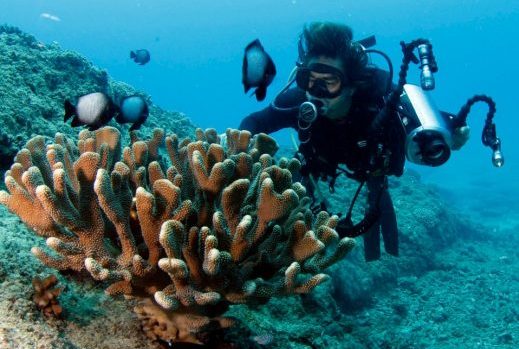
WAIMEA BAY
Depth: 20 – 60 ft / 7 – 20 m.
Visibility: 30 – 100 ft. / 10 – 35 m.
Category: Shore Dive
Waimea Bay is one of the most pristine beaches on the island and makes for one of the best dive sites on Oahu’s North Shore. The beach is closed in the winter except to surfers, as the bay creates massive waves. This beach is the home to local and national surf competitions in the winter months.
In the summer months, however, this location is an amazing dive site. There is a reef wall expanding outwards from shore, decorated with many swim throughs, caves, and lava tubes. The area is home to coral, reef fish, and many sea turtles, and is frequented by spinner dolphins in the summer months.

THREE TABLES
Depth: 15 – 60 ft / 5 – 20 m.
Visibility: 40 – 100 ft. / 13 – 35 m.
Category: Shore Dive
Three Tables is named appropriately after three big rock structures in the water, all visible from shore. The way these formations are creates a nice confined water area by the beach. Beyond the tables are many different dive opportunities.
Three Tables is part of the Pupukea Marine Sanctuary District, meaning that marine life is protected in the area. There is no fishing, poaching, or boating allowed in the area, which makes it very safe for both sea life and divers.
Past the tables and to the left is an expansive reef wall, boasting amazing topography and a turtle cleaning station. The area is often known for nursing whitetip reef sharks. The same wall expands to the right past the tables, leading to a natural wonder known as the Cathedrals. This is a huge swim-through that is so massive it could fit a school bus! Sunlight penetrates through the ceiling, lighting up the inside with majesty, hence the name.
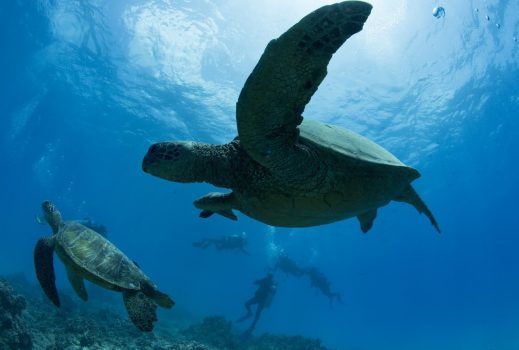
SHARKS COVE
Depth: 15 – 60 ft / 5 – 20 m.
Visibility: 40 – 100 ft. / 13 – 35 m.
Category: Shore Dive
Shark’s Cove is also part of the Pupukea Marine Sanctuary, making it pristine and flourishing with marine life. This area is one of the best dive sites Oahu has to offer due to the abundance of sea life. Since it is protected, the animals are very friendly and known for interacting with divers and snorkelers.
Scuba diving on the North Shore is incomplete without a trip to Shark’s Cove. So many of Hawaii’s native and endemic species can be found here. The area is home to reef fish, turtles, eels, octopi, sharks, Hawaiian monk seals, nudibranches, squid, rays, and more. Yes, that’s a lot of animals. Yes, it is amazing.
The topography is also astounding, with volcanic rock formations creating caves, walls, ledges, caverns, and swim throughs.
HONOLULU SCUBA DIVING
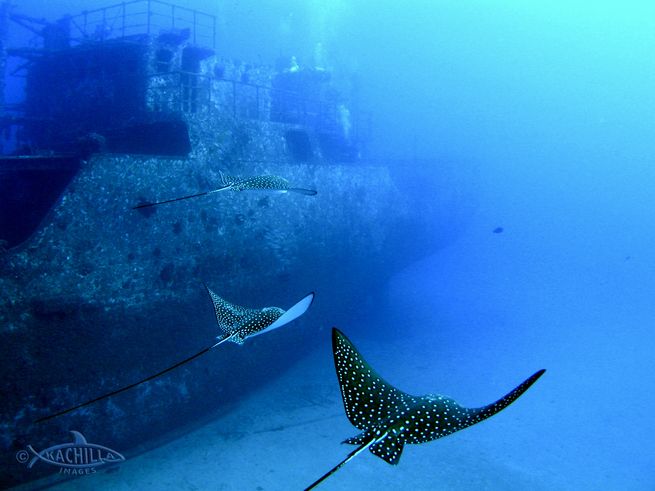
SEA TIGER
Depth: 80-130 ft. / 25-40 m.
Visibility: 60-120 ft. / 20-40 m.
Category: Wreck dive.
This is the deepest wreck dive for recreational divers, and also one of the most exciting. Because of the depth of this dive, some experience is necessary. The Sea Tiger is a beautiful ship that was originally a Chinese trading vessel. It was intentionally sank in 1999 by a submarine company as an effort to create more reefs around Oahu. Because its sinking was so recent, the ship has very little decay and is incredible to explore.
The Sea Tiger has become home to flourishing marine life, including eagle rays, sea turtles, moray eels, and whitetip sharks. Additionally, there are ample species of reef fish. The ship features multiple swim-throughs, some more dangerous than others. With so much to explore, this dive site near Waikiki is wonderful for beginners and advanced divers alike.
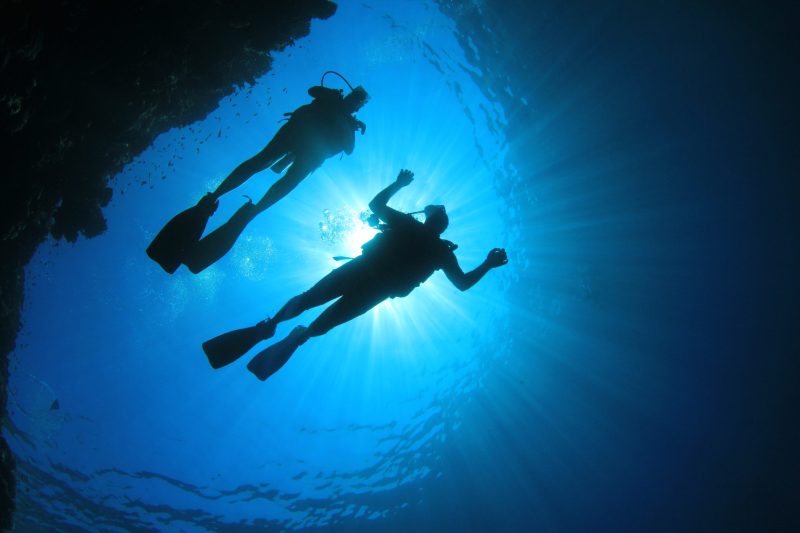
YO-257 / SAN PEDRO
Depth: 70 – 120 ft. / 22 – 36.5 m.
Visibility: 60-80 ft./ 20-27 m.
Category: Wreck Dive
These wreck dives are best accessed from Waikiki, giving you a spectacular view of Diamond Head and Honolulu’s skyline on the boat ride out. The YO-257 is an old navy ship that was sunk in 1989 as part of the state’s artificial reef project. There are abundant swim throughs and myriad marine creatures.
The YO-257 sits 120 feet down, with its deck around 80 feet, and is therefore only accessible to advanced divers. Only 70 feet away, and slightly shallower at 60 feet deep, is the San Pedro. This ship used to be a hospital vessel. It was sunk next to its sister, the YO-257, in 1996 as part of the same reef project. The San Pedro, however, is deteriorating at a much faster rate and is therefore not ideal for swimming through.
Both wrecks are home to huge amounts of sea life, including turtles, eagle rays, whitetip reef sharks, reef fish, nudibranches, and octopi. In fact, the deck of the San Pedro has become a turtle cleaning station! For divers seeking more of a challenge, this is one of the best dive sites Oahu has to offer. The currents around Diamond Head and into the harbor can make this site a challenge, while the depth makes for a limited bottom time. You will want to dive this site again to see all it has to offer.
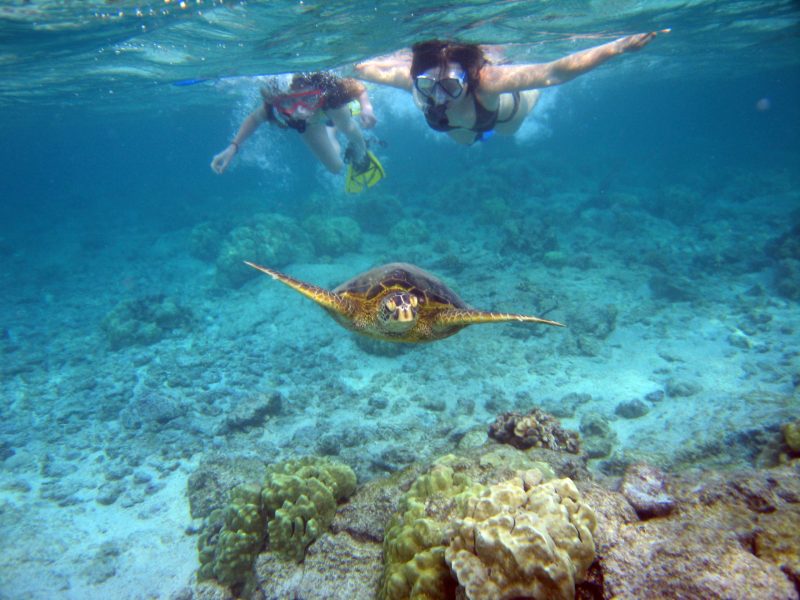
TURTLE CANYON
Depth: 15-45 ft./ 5-15 m.
Visibility: 20-100 ft./ 7-35 m.
Category: Boat Dive
The Turtle Canyon dive site is located in the same vicinity of the Sea Tiger, making them common sites to be explored on the same trip. This beautiful reef is one of the island’s infamous turtle cleaning stations. There are regular displays of marine life coexistence, as turtles relax to let fish munch off their shells. Other marine life includes ample species of reef fish, octopi, eels, and whitetip sharks.
Turtle Canyon Reef is far off the shore and therefore only accessible by boat. However, the cleaning station itself (which is on top of the reef) is shallow enough that it is visible to snorkelers too. This dive can be accomplished by any level of diver, since it is fairly shallow with excellent visibility.
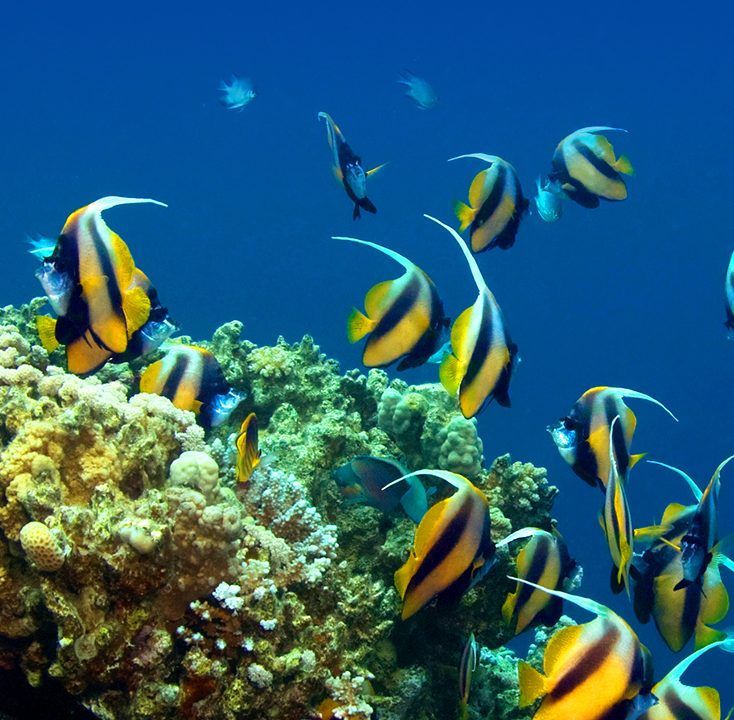
HORSE SHOE REEF
Depth: 40 – 60 ft. / 16 – 20 m.
Visibility: 40 – 100 ft. / 16 – 35 m.
Category: Reef Dive
Horseshoe Reef is an Oahu scuba diving site that is accessible to beginners, yet still entertaining for novices. It is surrounded by multiple neighboring reefs (close enough to visit in one dive) that are slightly deeper. This reef is frequented by dragon moray eels, frog fish, and manta rays. There have even been tiger shark sightings!
The depth of this reef offers the perfect balance of bottom-time and complexity. Within a two-tank dive, you should be able to go around the entire horseshoe and witness the many wonders this reef beholds.
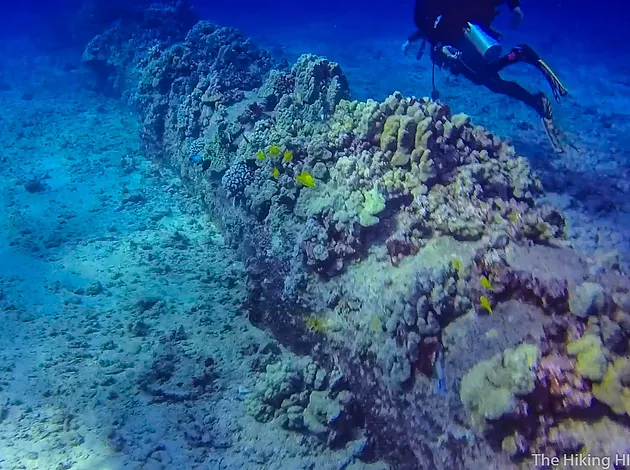
KEWALO PIPE
Depth: 35 – 65 ft. / 11 – 20 m.
Visibility: 40 – 100 ft. / 16 – 35 m.
Category: Boat Dive
The Kewalo Pipe dive is a great spot for beginners diving near Waikiki. This spot is – you guessed it – a pipeline! It is made of steel and has now been broken into smaller pieces. This dive features plenty of reef fish, including a large amount of scorpion fish and wrasse.
Due to the shallow location of this dive site, you can enjoy a longer bottom time than with the other nearby wrecks. However, the depth can be what you make it, since the pipe runs from shoreline all the way to 65 feet in depth. Natural reefs flank either side of the pipe, providing bright colors and abundant marine life.
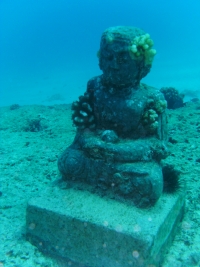
ANGLERS REEF / KOKO CRATER
Depth: 40 ft. / 13 m.
Visibility: 40 – 100 ft. / 16 – 35 m.
Category: Boat/Reef Dive
These shallow dive sites are perfect for beginners. Located on the East side of the city near Hawaii Kai, Angler’s Reef and Koko Crater offer plenty of entertainment while diving. Angler Reef is popular to dive at night, when crustaceans and Spanish Dancers come out to play. The dive will take you out and back along a reef wall, home to many reef rish, eel, and turtles.
Koko Crater is a bigger reef system nearby. A local dive company sunk Buddha statues around the dive site to make an interactive experience for divers! While these dive sites are great for beginners, the current can get strong and divers should always be careful to watch their air gauge.

FANTASY REEF
Depth: 45 ft. / 15 m.
Visibility: 60 – 120 ft. / 20 – 40 m.
Category: Drift Dive
Here’s a dive for all you adventurers out there! Fantasy Reef is one of Oahu’s best dive sites, but also one of its most dangerous and least consistent. The site is well off the shore, with a 25 minute boat ride to get there. Many times, upon arrival the conditions will be too rough and the group will have to turn around to dive elsewhere. However, on the days that the conditions are favorable, this dive may be the most beautiful in the Hawaiian islands.
Fantasy Reef is comprised of three plateaus made from ancient volcanic rock, now covered with reef and coral. Each plateau features overhangs, caves, and swim throughs. The area is prime real estate for turtles, who use the space to hide from nearby tiger and Galapagos sharks. Far less trafficked than many of the more popular spots, this dive site is pristine and unique from any other Oahu dive.

CHINA WALL (PORTLOCK WALL)
Depth: 35 – 100 ft. / 12 – 33 m.
Visibility: 60 – 150 ft. / 20 – 50 m.
Category: Wall Drift Dive
China Wall is one of Oahu’s most famous dive sites, located off the East side of Honolulu, near Hawaii Kai. One of the most popular ways to experience this dive is with the sea cave, where divers often find Hawaiian monk seals and sharks. Outside of the cave, the current is very strong. You will immediately drift along this long reef wall, with the current bringing you in towards Hanauma Bay. Many of Hawaii’s endemic fish species are found here!
For extra adventure, you can even find the above-water China Walls – a cliff jump spot behind a Hawaii Kai neighborhood!
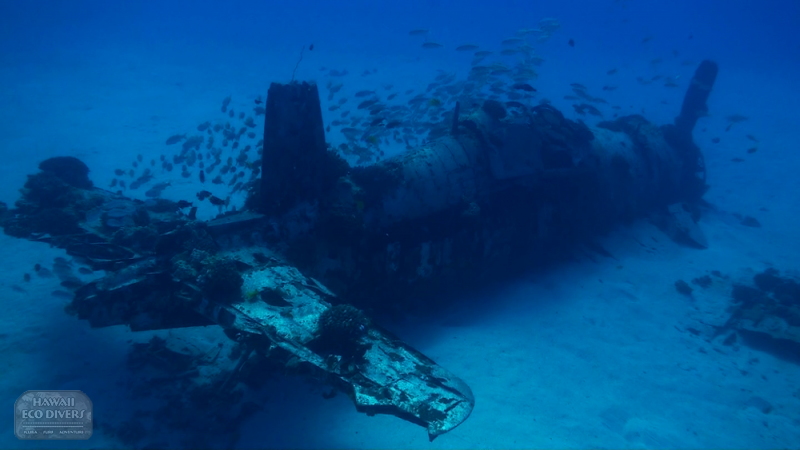
CORSAIR
Depth: 107 ft. / 35 m.
Visibility: 100 – 180 ft. / 35 – 60 m.
Category: Wreck Dive
The Corsair offers something unique among all of the best south shore dive sites – this is the only non-artificial wreck in Oahu! The small airplane crash landed in 1946, when the pilot was running out of air and ditched the vessel. He managed to escape the crash and survive! The plane remains completely intact at 105 feet deep.
The Corsair offers another unique quality. This dive site is one of a few that hundreds of endemic garden eels can be seen. They are always surrounding the wreck and playing hide-and-seek with the divers. Large stingrays often visit the area as well. This site has one of the best visibility ratings of the island, with an average day offering 100 feet / 35 m. of visibility. However, visibility reaches close to 180 feet/ 60m. at best!
WEST SIDE OAHU DIVE SITES
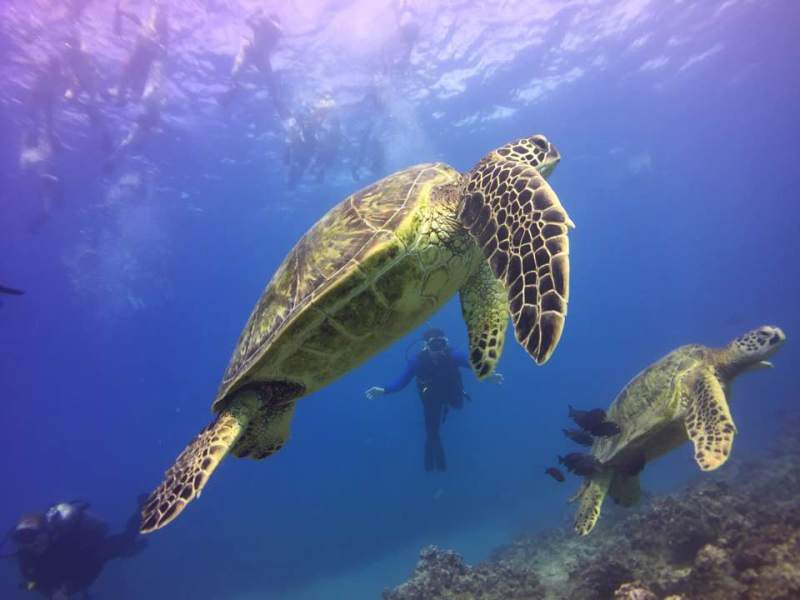
YOKOHAMA BAY (OR PRAY FOR SEX)
Depth: 20-100 ft./ 7-35 m.
Visibility: 60-120 ft. / 20-40 m.
Category: Shore & boat dive.
This dive site is located at the end of Farrington Highway before Kaena Point, the westernmost point of Oahu. It is full of amazing coral formation, lots of Hawaiian reef fish, lobsters, and sharks! The waves can get rough in this spot, so be careful! Shore diving may not recommended for children or those bad at swimming.

BLACK ROCK
Depth: 65 – 85 ft./ 21 – 28 m.
Visibility: 60-120 ft. / 20-40 m.
Category: Boat dive.
Black Rock dive site is an incredible rock ledge with a large overhang. Conditions are similar to a cave dive. This environment makes for a great hideout for reef sharks, eels, octopi, and sea turtles. Rays and other endemic species are present all around this beautiful rock feature.
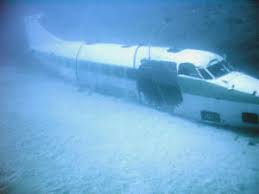
29 DOWN
Depth: 85 ft./ 30 m.
Visibility: 60-120 ft. / 20-40 m.
Category: Wreck dive.
29 Down dive site on the west side of Oahu is a unique experience for every diver! This site is a small airplane that was sunk for use in the TV series “Flight 29 Down.” A beautiful reef circles the plane, which fills the area with colorful and friendly marine life.

ELECTRIC BEACH
Depth: 15 – 30 ft./ 5 – 10 m.
Visibility: 40 – 100 ft. / 13 – 33 m.
Category: Shore dive.
Kahe Point is nicknamed “Electric Beach” due to the power plant across the highway. Two large pipes come out from this facility, dumping a constant flow of warm water. These pipes have become flourishing artificial reefs, with massive concentrations of coral on and around it. The area is busy with marine life, including reef fish and many endemic species. Natural reefs run along either side of the pipe, embellishing the ecosystem with even more sea creatures.
This dive site is fun for all levels of diver – you will see something new nearly every dive! Electric Beach is known for being one of the only spots on Oahu that you can see and hear dolphins year-round.

MAKAHA CAVERNS
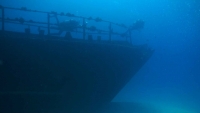
L.C.U. (LANDING CRAFT UNIT)
Depth: 60 – 80 ft./ 20 – 27 m.
Visibility: 60 – 120 ft. / 20 – 33 m.
Category: Wreck dive.
Located very close to the 29 Down wreck, is Oahu’s famous L.C.U., or Landing Craft Unit. This shipwreck sank upside-down, creating a unique experience for any diver. Whitetip Reef Sharks live under the ship and can be found resting on the ocean floor during the day. Up towards the “bottom” of the boat, divers often see fish swimming upside-down! Around the ship are many Z-blocks, placed by the state to create artificial reefs in order to boost fish populations.

MAHI WRECK
Depth: 90 ft. / 30 m.
Visibility: 60-140 ft. / 20-45 m.
Category: Wreck dive.
The Mahi is one of Oahu’s most popular wreck dives, and it never disappoints! This ship was a US Navy minesweeper that was sank in 1982 as an artificial reef project. The wreck is 190 ft./ 63 m. long.
Because of its long bottom-time, a lot of marine life can be found around the Mahi Wreck. A squadron of eagle rays lives nearby and is often seen swimming along the side of the wreck, in groups up to as many as 20 at once. A great barracuda is often found circling the mast post, as it has claimed the Mahi as its home. These creatures are joined by large schools of reef fish, eels, and bigger sharks.
Watch the video of Hawaii Eco Divers diving the Mahi Wreck!
